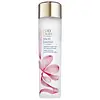What's inside
What's inside
 Key Ingredients
Key Ingredients

No key ingredients
 Benefits
Benefits

 Concerns
Concerns

 Ingredients Side-by-side
Ingredients Side-by-side

Water
Skin ConditioningBifida Ferment Lysate
Skin ConditioningPropanediol
SolventButylene Glycol
HumectantLactobacillus Ferment
Skin ConditioningOryza Sativa Lees Extract
Skin ConditioningPrunus Lannesiana Flower Extract
Skin ConditioningAlgae Extract
EmollientLaminaria Saccharina Extract
Skin ProtectingAcetyl Hexapeptide-8
HumectantAcetyl Glucosamine
Skin ConditioningSodium Hyaluronate
HumectantAnthemis Nobilis Flower Extract
MaskingCaffeine
Skin ConditioningDipotassium Glycyrrhizate
HumectantBetaine
HumectantMaltodextrin
AbsorbentCarbomer
Emulsion StabilisingTromethamine
BufferingCitric Acid
BufferingTrehalose
HumectantCaprylyl Glycol
EmollientPentylene Glycol
Skin ConditioningPEG-75
HumectantPPG-5-Ceteth-20
EmulsifyingDisodium EDTA
Sodium Citrate
BufferingPhenoxyethanol
PreservativePotassium Sorbate
PreservativeWater, Bifida Ferment Lysate, Propanediol, Butylene Glycol, Lactobacillus Ferment, Oryza Sativa Lees Extract, Prunus Lannesiana Flower Extract, Algae Extract, Laminaria Saccharina Extract, Acetyl Hexapeptide-8, Acetyl Glucosamine, Sodium Hyaluronate, Anthemis Nobilis Flower Extract, Caffeine, Dipotassium Glycyrrhizate, Betaine, Maltodextrin, Carbomer, Tromethamine, Citric Acid, Trehalose, Caprylyl Glycol, Pentylene Glycol, PEG-75, PPG-5-Ceteth-20, Disodium EDTA, Sodium Citrate, Phenoxyethanol, Potassium Sorbate
Water
Skin ConditioningGlycerin
HumectantSodium Citrate
BufferingCI 42090
Cosmetic ColorantCI 14700
Cosmetic ColorantPEG-60 Hydrogenated Castor Oil
EmulsifyingChlorphenesin
AntimicrobialSambucus Nigra Flower Water
Skin ConditioningLinalool
PerfumingBenzyl Alcohol
PerfumingPropylparaben
PreservativeAlpha-Isomethyl Ionone
PerfumingGeraniol
PerfumingRosa Centifolia Flower Water
Skin ConditioningMethylparaben
PreservativeTetrasodium EDTA
Citronellol
PerfumingHexylene Glycol
EmulsifyingParfum
MaskingWater, Glycerin, Sodium Citrate, CI 42090, CI 14700, PEG-60 Hydrogenated Castor Oil, Chlorphenesin, Sambucus Nigra Flower Water, Linalool, Benzyl Alcohol, Propylparaben, Alpha-Isomethyl Ionone, Geraniol, Rosa Centifolia Flower Water, Methylparaben, Tetrasodium EDTA, Citronellol, Hexylene Glycol, Parfum
 Reviews
Reviews

Ingredients Explained
These ingredients are found in both products.
Ingredients higher up in an ingredient list are typically present in a larger amount.
Sodium Citrate is the sodium salts of citric acid. In skincare, it is used to alter pH levels and acts as a preservative.
Its main functions are to maintain the pH of a product and neutralize metal ions.
The acidity of our skin is maintained by our glands and skin biome; normal pH level of skin is slightly acidic (~4.75-5.5).
Being slightly acidic allows our skin to create an "acid mantle". This acid mantle is a thin barrier that protects our skin from bacteria and contaminants.
Learn more about Sodium CitrateWater. It's the most common cosmetic ingredient of all. You'll usually see it at the top of ingredient lists, meaning that it makes up the largest part of the product.
So why is it so popular? Water most often acts as a solvent - this means that it helps dissolve other ingredients into the formulation.
You'll also recognize water as that liquid we all need to stay alive. If you see this, drink a glass of water. Stay hydrated!
Learn more about Water